The first British E-7 Wedgetail Airborne Early Warning and Control aircraft has made its first ever flypast with the Red Arrows at the Royal International Air Tattoo (RIAT) 2025 in Gloucestershire.
The Boeing-built E-7 AEW Mk1, still undergoing acceptance and flight trials, joined the nine Hawk jets of the RAF Aerobatic Team in a mixed formation flypast viewed by a crowd of more than 50,000. The flypast was followed by a ‘touch and go’ manoeuvre before the Wedgetail returned to Birmingham Airport.
“The Wedgetail appearance at RIAT not only reinforces the hard work and collaboration of all those contributing to the project but also reflects the importance of delivering the next generation of airborne surveillance and control capabilities to support the RAF’s operational effectiveness in the years to come,” said Group Captain Osselton, Programme Director for the E-7 Programme.
The E-7’s RIAT flypast comes as it continues flight testing ahead of formal entry into RAF service with No. 8 Squadron at RAF Lossiemouth, where it will join the RAF’s P-8 Poseidon maritime patrol aircraft fleet. Both platforms are based on the Boeing 737 Next Generation airframe, allowing for increased training and logistical efficiencies.
Squadron Leader Jon Bond, Red 1 and Team Leader of the Red Arrows, said: “Whether it’s the Red Arrows’ history-making, world-first use of sustainable fuels at this year’s RIAT or the introduction of E-7 Wedgetail, both showcase the RAF’s commitment to constant, cutting-edge innovation. I hope those watching the flypast were able to take plenty of photographs to mark this special mixed formation and true highlight of the 2025 Air Tattoo.”
The E-7 Wedgetail is widely regarded as the most capable airborne early warning and control aircraft in operational service today. Built around the Northrop Grumman MESA radar, the aircraft offers a 360-degree surveillance capability, tracking airborne and maritime threats while providing real-time battle management across multiple domains.
Mission crews will operate from a suite of high-specification consoles to direct air and maritime forces, ensuring continuous awareness and control over contested airspace. The system is designed to enhance the lethality and survivability of allied assets in high-threat environments.
“Today’s flight is an amazing testament to the work of our integrated Boeing and UK supplier team, in partnership with the RAF,” said Stu Voboril, Boeing Vice President and E-7 Program Manager.
“Our work reflects the pride we take in supporting the strategic alliance among the UK, U.S., and allies, and the role the E-7 plays in strengthening global joint force mission advantage.”
The UK has ordered three Wedgetail aircraft, down from an original five, as a replacement for the retired E-3D Sentry fleet. The platform’s introduction has been delayed but is expected to deliver a step change in RAF command and control capability once operational.



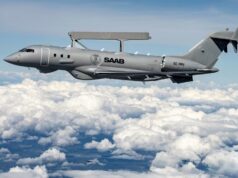
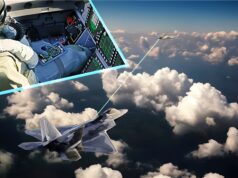
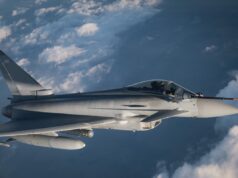
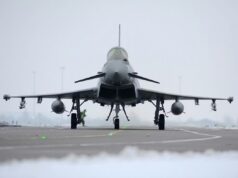
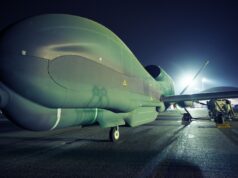

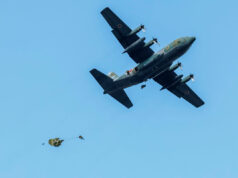


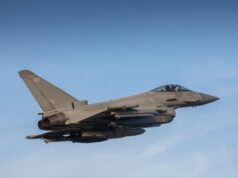

Two more are needed , 3 it,s ridiculous.
Halfway there, with the two spare radars. Just need two spare planes to attach them to!
Yes the radars are the most expensive bit so it makes sense to build 5. There are signs that the 3 is under review and we may well get the 5.
Get a dozen. It will provide work for a decent period and five seems only marginally better than three.
P8 flypast with the Reds planned for tomorrow. Me and my lad are setting off at 4am. Looking forward to our day.
Enjoy Robert. I’ve been with my two a couple of times.
Looking forward to it. 1990 was my first visit with my dad. Now I get to go with my own son. Its still an impressive show. Just a shame all the other airshows at RAF or USAFE stations have gone.
Enjoy
Good show, mate. Enjoy.
Thanks mate.
Enjoy.
Shame it isn’t the spectacular cloudless skies we had until a couple of days ago.
Can the RAF refuel them yet?
No
Yes, but only on the ground….
Like the Poseidon and Rivet Joint and the F35As to come, they use/will use the US tankers out of Mildenhall. The Dutch tankers can refuel using boom as well as reel and basket
Good we are getting these but we need to start focussing on UK, Aus, Can, and EU collaborations. We should have an airbus platform available for these kind of purposes by now. We should have an alternative to US radar we could have used. I’m not saying avoid US systems totally but let’s diversify and make the other half of the Western alliance great again. Not just the US half.
Somethings are simply too expensive to do 100% yourself.
RAF was also suffering from Nimroditis as AEW and MRA4 debacles.
Just my personal opinion, BUT if I was any airframe builder I would drop some cash to make this happen- TODAY! And maybe just maybe encourage some bright sparks from the Ukraine to get involved…
Please Sir Keir can we have some more?
The RAF said they needed 5 wedgetails in order to provide adequate coverage and redundancy for operations. Two are needed to be always available to provide 24/7 coverage. When one factors in the needs of upgrades, maintenance and training it is not possible to provide operational 24/7 coverage with just 3 aircraft. Another terrible decision made by Politicians.
The same ones that brought us Brexit.
Brexit was never the issue. Brown nosing Defence blind EU politicians like Merkel was.
The true authors of our current problems were Cameron and Osbourne…remind me which side they stood on in the Brexit debate? Was it the end of history aren’t the Russians lovely side?
They also loved the CCP.
The reality is we need a fair few more AEE aircraft that 3 or even 5. The fact the Cold War ended never reduced the need for a specific number of AEW aircraft. The need is based around physics and physical limits not numbers of enemies..
So if the physics of detection, physics of flight, biological limits of humanity and geography have not changed.. why have we changed the numbers needed ? The UK ordered or wanted 11 nimrod AEW in the 1980s, then we went for 7 E-3, then 5 wedgetails then 3 wedgetails. The present need is probably the same at the need that drove an order of 7 E-3.
It would make a lot more sense to have more E7’s. Back up to the original 5, but expanding up to 8 would be ideal. As that allows aircraft to be in training maintenance, on patrol and even deployed. With only 3 aircraft, it doesn’t even meet extant commitments and leaves significant gaps in our radar picture.
Looking at the aircraft within the UK’s armed forces that can be refueled by the A330 Voyager. It is now at 3 aircraft, with the A400M, Typhoon and F35B. We have to rely on allies to refuel our other aircraft, such as the River Joint, C17, P8 and soon to be E7 and F35A. We also have not taken up the ability of the A400M being capable of mid air refueling our Chinooks and Merlin.
Somebody at the MoD needs to have a head wobble and recognize the absurd situation we are in. But more importantly do something about it!
They’re more interested in grand standing. This has been known about for some time. Any idea of the costs of fitting Booms to some of the Voyager fleet which I understand can have both fitted at once?
With Hose and Drogue on the wing pods and Boom from the central fuselage pod.
It’s not in the PFI contract, I suspect it would cost a fortune and require a contract renegotiation, with the commercial companies essentially being able to name their price, because that’s what happens if you try and vary a contract… all because the UK government did not want to spend about 2 billion in capital costs upfront…
Do you think it might be to do with them being used by other airlines when not required for the RAF? I’d assume the wing pods can be removed but, the boom must have to stay in place and may look odd on a Jet2 painted airliner.
The issue with these is they would be a day one target in the event of a war. Ukraine / Israel has shown how deadly covert drone actions can be. They are big aircraft and so protecting them against unsuspected drone strikes would be near impossible. The only defence would be to keep them in the air but that isn’t realistic.
Defending large high value assets is going to insanely difficult going forward, especially anything that has highly sensitive equipment that can be easily damaged
They are ‘old’ 737NGs built by Boeing, of course, but the actual conversion was by STS Aviation at Birmingham Airport, which perhaps deserves a mention? Interestingly enough their website still says they’re making 5! I suspect they will , in then end. I am right in thinking we bought 5 radar sets?